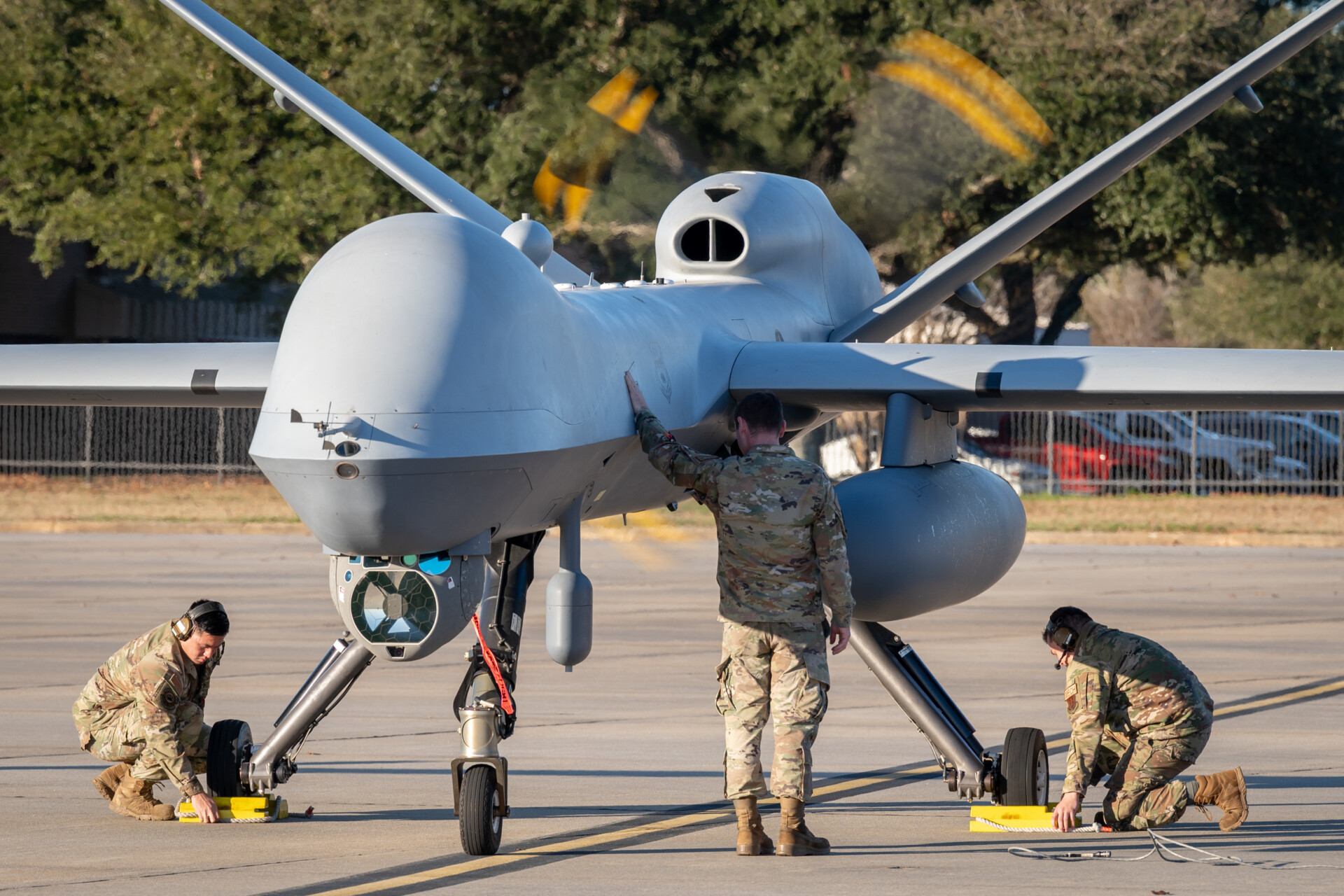US Deploy MQ-9A Reaper Drones in Philippines to Support Intelligence Activities in South China Sea
The high-performance Medium Altitude Long Endurance (MALE) MQ-9A Reaper drone will operate from Basa Airbase near Metro Manila at the request of the Manila to support intelligence exchange activities between the Philippine Armed Forces and the U.S Indo Pacific Command.
(DEFENCE SECURITY ASIA) — In order to assist the intelligence activities required by the Philippine Armed Forces and its own troops in the Indo-Pacific region, the United States has deployed an MQ-9A Reaper drone at the South-East Asian country air base on “temporary” and rotational basis.
The high-performance Medium Altitude Long Endurance (MALE) MQ-9A Reaper drone will operate from Basa Airbase near Metro Manila at the request of the Manila to support intelligence exchange activities between the Philippine Armed Forces and the U.S Indo Pacific Command.
According to U.S. defense media reports, the MQ-9A will be involved in surveillance and monitoring activities to support intelligence exchange efforts between the United States and the Philippines subject to the country’s laws.
The MQ-9A Reaper will be stationed in the Philippines “temporarily” and on rotational basis since the 1987 country’s constitution prohibited the permanent deployment of foreign troops in the country.
Instead, the drones were deployed in the Philippines on rotation, something permitted under the 2014 Enhanced Defence Cooperation Agreement between the two countries.
Last March, the United States Air Force’s Pacific Air Forces (PACAF) issued a statement saying that it had successfully obtained “logistical support for permanent deployment” for the MQ-9A Reaper drones at the Basa Air Base.
The statement also states that the MQ-9A drone has been involved in five missions in the South China Sea to support surveillance and monitoring efforts in the Second Thomas Shoal.
The MQ-9A drone stationed at Basa Air Base in Metro Manila was operated by the U.S. Marine Corps unit based on the island of Hawaii.

Soon after issuing the statement, US authorities withdrew it without any explanation.
This is not the first time U.S. military-owned drones have operated from the Philippines to support Manila in its dispute with China over the South China Sea.
Last year, a U.S. Army-owned MQ-1C Grey Eagle drone operating from Edwin Andrews Air Base in the south of the Philippines was sighted as the Philippine army carried out a supply delivery mission to its rustic warships, the BRP Sierra Madre at Second Thomas Shoal.
U.S. drones are also involved in various activities and missions at the Edwin Andrews Air Base in the southern Philippines while supporting anti-terrorism activities, Operation Enduring Freedom and Operation Pacific Eagle.
The U.S. MQ-9A drone was also involved in the Balikatan 2024 exercise last month.
Basa Airbase in Metro Manila has been identified as one of the recipients of financial aid from the United States under the Enhanced Defence Cooperation Agreement.
It is one of the nine Philippine military bases that the United States has been granted access to in the Southeast Asian country.
The financial aid from the United States will see all nine Philippine military bases are upgraded including its runways, command and control centre, humanitarian and disasters storage centres.

According to U.S. defense media, the Basa Base at Metro Manila will be expanded to enable it to support the operation of about 20 aircraft.
The MQ-9A Reaper (Predator B) is a state-of-the-art U.S. military drone that began its flight in 2001.
Developed by General Atomics, the MQ-9A Reaper is capable of flying non-stop for 27-34 hours at an altitude of 50,000 feet and carrying a range of loads weighing 1,740 kilograms.
The MQ-9A Reaper is a modular platform with the ability to carry a wide range of loads adapted to its missions including Electro-optical/Infrared (EO/IR), Lynx® Multi-mode Radar, multi-mode maritime surveillance radar, Electronic Support Measures (ESM), laser designators and various types of weapons. –DSA


Comments are closed.